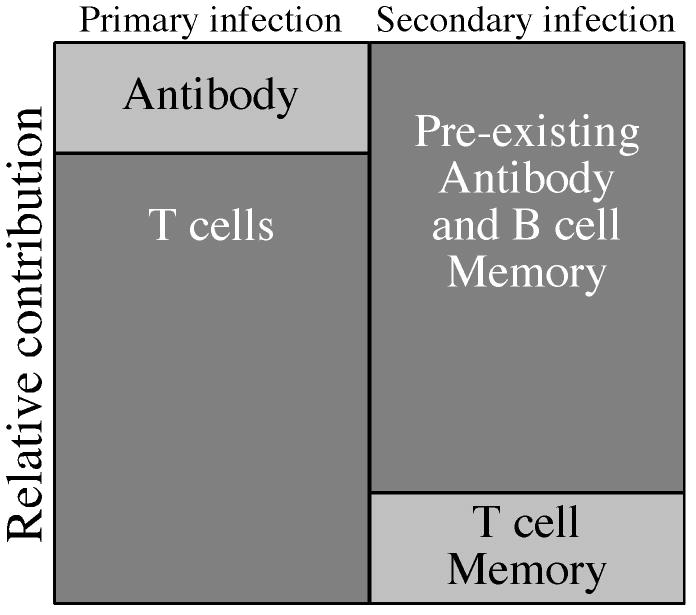Figure 2.
Relative contributions of humoral and cellular immunity during primary or secondary infection. During primary viral infection, antiviral T cell responses are critical for reducing viral replication in addition to contributing to the development of an effective antibody response. Primary T cell-dependent antibody responses are mounted during the course of infection and take time to undergo immunoglobulin class-switching and somatic hypermutation as they provide assistance to virus-specific T cells in resolving the infection. Following recovery from primary infection (or vaccination), persisting virus-specific antibody represents the first line of defense against secondary infection. If secondary infection does occur, then circulating antibodies and presumably memory B cells that proliferate and differentiate into antibody secreting cells will reduce virus dissemination and allow time for the development of an antiviral T cell response. Memory B cells are highly efficient at presenting specific antigen (Lanzavecchia, 1985) and therefore may also be involved with more rapid and efficient presentation to T cells as well. Pre-existing T cell memory will also play a role in protection against secondary infection. However, even if T cell memory has declined or is lost, the long-term maintenance of antiviral antibody responses will suppress virus replication until a new virus-specific T cell response is mounted from the naïve repertoire.

